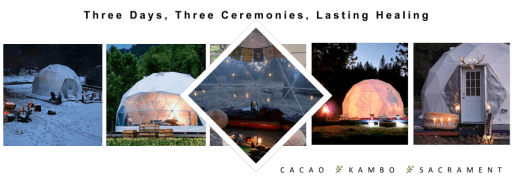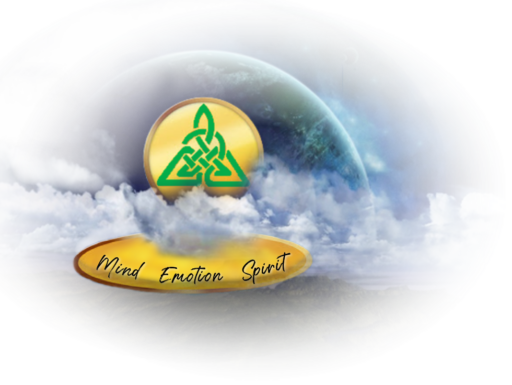The History of Soul Retrieval: Timeless Shamanic Practice
Introduction: Remembering the Lost Parts of the Soul
For thousands of years, shamans across cultures have practiced soul retrieval—the sacred art of reclaiming fragmented pieces of the human spirit lost through trauma, grief, or deep emotional wounds. While the modern world often reduces healing to clinical terms, traditional shamans viewed wholeness as a spiritual state, inseparable from the body and mind.
Today, this timeless practice is re-emerging in conversations around plant medicine, trauma healing, and spiritual transformation, offering a bridge between ancient wisdom and modern science. At the Meehl Foundation, soul retrieval is not just mythology—it is a living practice, woven into the ceremonial use of sacred psilocybin plant medicine retreats that help participants reconnect with their Divine self.
Discover the timeless history of soul retrieval, an ancient shamanic practice for reclaiming lost parts of the self, healing trauma, and restoring spiritual wholeness.
This blog explores the history of soul retrieval across shamanic traditions, how it continues to evolve, and why it resonates so deeply in our search for healing today.
The Ancient Origins of Soul Retrieval
Soul retrieval is one of humanity’s oldest healing practices, appearing in indigenous traditions across Siberia, the Americas, Africa, and Asia. The shaman was not only a healer but a bridge between the physical and spiritual worlds, guiding souls back to wholeness.
In Siberian shamanism, it was believed that illness often stemmed from the soul leaving the body due to shock or trauma. Shamans journeyed into the spirit world to retrieve these lost parts, using drumming, chanting, and plant medicines.
In Native American traditions, the concept of “soul loss” was linked to trauma such as grief, abuse, or sudden accidents. Healing ceremonies invoked ancestral spirits to restore vitality.
In Amazonian traditions, plant medicine like ayahuasca was used to illuminate soul loss and reconnect individuals with their spiritual essence.
This universality demonstrates a profound truth: across time and culture, humanity has recognized that trauma is not only psychological but deeply spiritual.
👉 Related cornerstone resource: Shamanic Plant Medicine Retreat: Ancient Practices, Modern Healing
The Shaman as Soul Guide
The role of the shaman was to travel beyond the ordinary world to recover lost soul fragments. This work required ritual, altered states of consciousness, and direct communion with spirit allies.
The shaman often described encountering the lost soul as a child, frozen in time at the moment of trauma. With compassion and ritual, they guided this fragment back to the person, restoring vitality, joy, and presence.
Modern therapists and researchers have drawn striking parallels between this description and contemporary understandings of dissociation and trauma responses. What shamans called “soul loss,” modern psychology might frame as the psyche’s protective fragmentation.
👉 Explore related healing retreats: Healing Retreat for Trauma & PTSD: Sacred Wholeness
Soul Loss in Modern Life
While we no longer live in the same tribal societies, soul loss is as present as ever. Trauma may look different—abuse, neglect, violence, systemic oppression, addiction—but the impact is the same:
A sense of emptiness or incompleteness
Numbness, disconnection, or feeling “not fully here”
Difficulty in relationships and intimacy
Cycles of depression, anxiety, or addiction
In our modern context, these wounds are often pathologized without recognition of their spiritual roots. Soul retrieval reframes these struggles as losses that can be restored, offering hope and sacred renewal.
👉 Related cornerstone resource: Psychedelic Therapy Retreats: Transform Trauma into Healing
Plant Medicine and Soul Retrieval
In traditional shamanic cultures, plant medicine was central to soul retrieval. Sacred plants like ayahuasca, peyote, and psilocybin mushrooms opened pathways into the spirit world.
Today, psilocybin ceremonies at safe, guided retreats continue this lineage. Participants often report encountering lost aspects of themselves during ceremony—inner children, past life memories, or unresolved traumas. Through compassionate facilitation, these soul parts are welcomed back into wholeness.
Modern neuroscience confirms that psilocybin increases neuroplasticity, allowing the brain to create new connections. In spiritual language, this is the same as inviting soul fragments home.
👉 Learn more: Psilocybin Retreats USA: Safe, Guided Healing in Nature
The Healing Journey of Reclaiming the Self
The process of soul retrieval is not simply mystical—it is profoundly practical. Participants often report:
Renewed energy and vitality
Greater clarity and purpose
Release from cycles of depression or addiction
A deepened connection to the Divine
For women in particular, soul retrieval offers a way to reclaim voices silenced by cultural conditioning and personal trauma. It restores agency, creativity, and spiritual sovereignty.
👉 Related cornerstone resource: Psilocybin Ceremony: Sacred Healing & Transformation
Soul Retrieval as a Collective Healing Practice
Beyond individual transformation, soul retrieval is also about healing the collective. In many cultures, trauma was seen not only as a personal wound but as something that affected the entire community.
Today, we might consider how generational trauma, colonization, and cultural disconnection create collective soul loss. Plant medicine ceremonies, especially in group retreat settings, provide an opportunity for communal healing, where the act of one person reclaiming their soul inspires others to do the same.
Science Meets Spirit
Interestingly, modern researchers are finding resonance with these ancient practices:
Studies on psilocybin for PTSD suggest that plant medicine helps re-integrate traumatic memory without overwhelming the nervous system.
Neuroscience shows psilocybin increases neuroplasticity, which mirrors shamanic descriptions of creating “new pathways” for the soul to return.
Psychologists recognize that healing often requires a return to inner child states, something shamans described centuries ago.
This convergence highlights how ancient practices and modern science can support each other in guiding humanity back to wholeness.
Conclusion: A Timeless Practice for a Modern Age
The history of soul retrieval shows us that healing is not new—it is ancient, woven into the spiritual fabric of humanity. What is new is our willingness to reclaim this wisdom in a modern context, supported by both science and ceremony.
At the Meehl Foundation, we honor this timeless lineage by offering safe, guided psilocybin retreats where participants can reconnect with lost parts of the self, reclaim their Divine wholeness, and awaken to the sacred truth that healing is possible.
Yes—I’m ready to reclaim the lost pieces of my soul. Guide me to the retreat where wholeness and Spirit meet.

Meehl Foundation Blog
My Personal Soul Retrieval Story: How I Reclaimed the Lost Pieces
Psilocybin for Sexual Trauma Survivors: A Sacred Path to Healing
External Research Links
Sandra Ingerman (1991). Soul Retrieval: Mending the Fragmented Self. HarperOne. https:/
Mircea Eliade (1964). Shamanism: Archaic Techniques of Ecstasy. Princeton University Press. https://press.princeton.edu/books/paperback/9780691610688/shamanism
Stanislav Grof (2000). Psychology of the Future. SUNY Press. https://www.sunypress.edu/p-3648-psychology-of-the-future.aspx
Robin Carhart-Harris et al. (2018). Psilocybin and the Entropic Brain. Frontiers in Human Neuroscience. https://www.frontiersin.org/articles/10.3389/fnhum.2018.00112/full










Leave A Comment